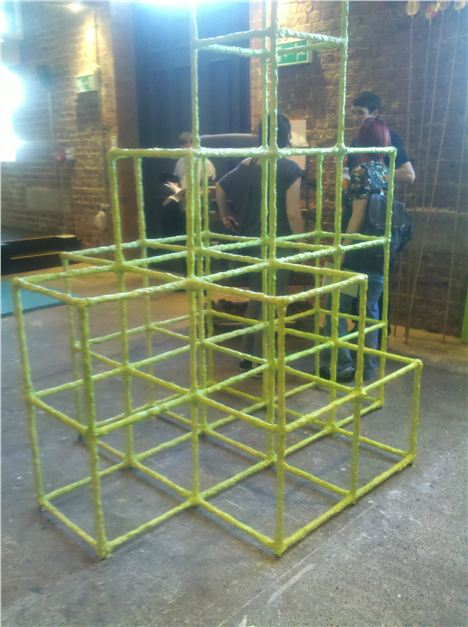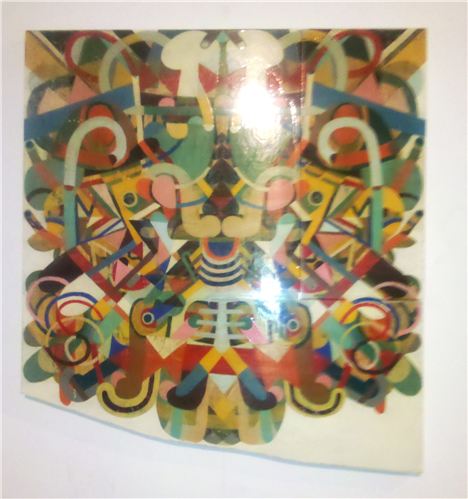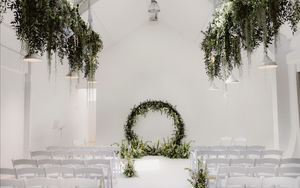INTO its seventh year now and still going strong, the Liverpool Art prize was the brainchild of bloggers Ian and Minako Jackson and inspired by the Turner Prize coming to Liverpool during European Capital of Culture in 2008. Now, it’s become part of the local cultural calendar with the arts organisation METAL taking overall responsibility.
Each year, the number of entrants has grown. Well over 50 were considered this time by a highly-qualified panel of judges which includes Pavel Büchler (a Czech-born, UK-based artist, teacher and occasional writer), Francesco Manacorda (artistic director of Tate Liverpool] and Simon Poulter [new media artist and METAL’s associate curator]. From these, three were shortlisted – Brigitte Jurack, Jason Thompson and Tabitha Jussa.
In actual fact, there are a number of prizes on offer. The main prize is £2,000 plus an invitation to create a solo exhibition at the Bluecoat. There is, also, a “People’s Choice” prize of £1,000 with other goodies being a year-long residency at Edge Hill station (METAL’s base) and a month-long residency at the Shanghai Art School.
 Contender: Green Frame by Brigitte Jurack
Contender: Green Frame by Brigitte Jurack
In terms of the final three, each had contrasting and highly individual approaches. Brigitte Jurack created an installation named The Explorers Are Gone For Tea which had a playful theme suggesting a nostalgic harking back to fun-filled summer days. There was a green frame which wouldn’t have looked out of place in a kindergarden, a multi-coloured “rock”, which resembled an amorphous mermaid’s purse you might discover on a beachcombing trek, and a collection of snooker triangles which made a curious sculpture.
In turn, Jason Thompson provided a range of enamel-on-wood paintings and a number of sketchbooks. His style is quite precise and tended to follow symmetrical patterns with references back to playing card imagery. One piece, The Non-Random Survival of Randomly Varying Replications had interesting interplays between doodling and jigsaws. Similarly, Nothing Has Been Decided had associations with the style of naïve art you might find on narrowboats and gaudy fairground attractions.
Finally, Tabitha Jussa’s consisted of three large-scale colour photographs showing the state of decay of the terraced streets in parts of Liverpool 8.
She has spent the last couple of years documenting the results of the badly-planned HMRI which finally saw these properties being sold off at a pound each. There is a long photograph of the length of Ducie Street. Taken with a specialist architectural camera, it was technically very good, though it left a distinctly depressing impression. The sense of destruction of the original community was tangible – something captured well in the opening scene of Terence Davies’s A Long Day Closes. In fact, both Davies and Jussa share a good deal of respect for the work of Humphrey Spender and its echoes in Mass Observation.
Next, St. Andrews Gardens in Bronte Street which was part of the original Bullring with Gerard Gardens. This was an example of solid urban planning by Sir Lancelot Keary which was originally earmarked for demolition but is, now, yet another block of student accommodation in the heart of the city.
 Nothing Has Been Decided by Jason Thompson
Nothing Has Been Decided by Jason Thompson
Original residents created a great community spirit which blossomed through the work of Brian and Marge Wintercross and the Bronte Art Centre. Sadly, no more but they left an indelible legacy.
There’s a quote from a Ministry of Health, back in 1939, which says “If architects, builders, owners and tenants worked together to secure sound and sensible buildings, our towns would become pleasant living spaces and a threat to the countryside would pass away."
Finally, an image of a single property which exemplifies what went wrong when that sensible sentiment failed to deliver - what is, or more importantly, was 49 Wynnstay Street. The house was picked out at random from the numerous ones Jussa could have chosen and, interestingly, was accompanied by a list of the previous occupants taken from the Liverpool Directory. The house, or what used to be a home, is a wreck whilst the Living through Change programme rolled out across the HMRI areas.
It came as no surprise to me that Jussa's work won both the Main Prize and the People’s Prize given her strong socio-political context and the impact of HMRI within METAL’s own community base - the Kensington/Picton/Lodge Lane area.
She said “I have always been a supporter of the Liverpool Art Prize since its initial conception. It was an amazing honour to simply be nominated, but to actually win it is an incredible feeling and I can’t quite believe it. I feel very proud that photography can sit aside other traditional art forms such as sculpture and paintings”.
Coincidentally, this is the second year running that both prizes were won by the same artist – both named Tabitha.
The winners of the two residency opportunities were also announced; Robert D Davies was the lucky recipient of the yearlong residency at Metal and Dinu Li won the month-long residency in Shanghai.
There is no doubt that the Liverpool Art Prize is an important factor in both encouraging local artistic talent whilst promoting the city’s well-justified cultural legacy since 2008. Long may it thrive and continue to act as a catalyst for future artistic practitioners.







